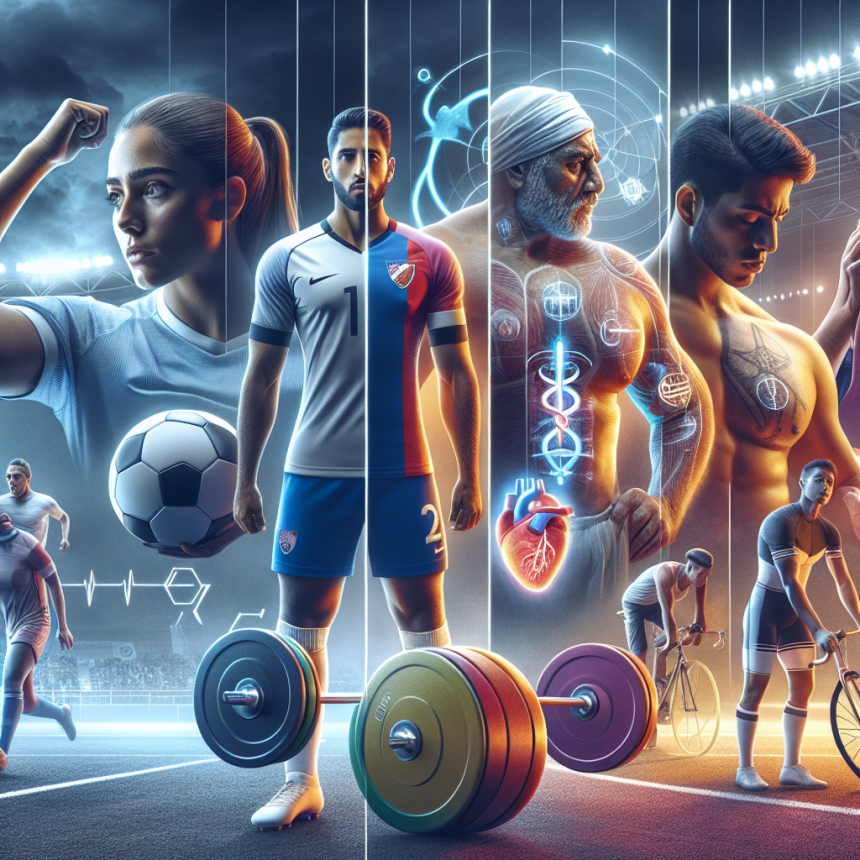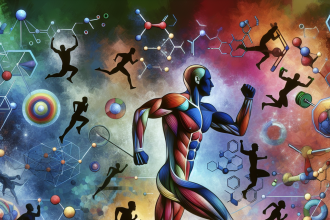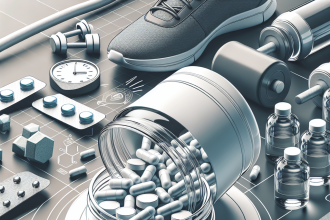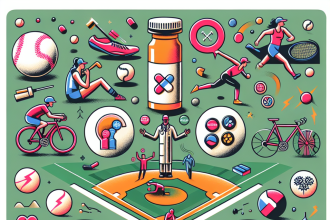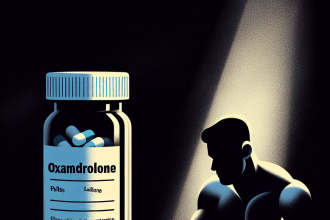-
Table of Contents
Unveiling the Side Effects of Methyltestosterone in Sports
Methyltestosterone, also known as 17α-methyltestosterone, is a synthetic androgenic-anabolic steroid (AAS) that has been used in sports for decades. It was first developed in the 1930s and has since been used by athletes to enhance their performance and physical appearance. However, with the rise of drug testing in sports, the use of methyltestosterone has become a controversial topic due to its potential side effects. In this article, we will delve into the pharmacokinetics and pharmacodynamics of methyltestosterone and explore its potential side effects on athletes.
Pharmacokinetics of Methyltestosterone
Methyltestosterone is a synthetic derivative of testosterone, the primary male sex hormone. It is available in oral and injectable forms and is typically taken in cycles, with doses ranging from 10-50mg per day. The half-life of methyltestosterone is approximately 4 hours, meaning it is quickly metabolized and eliminated from the body. However, its metabolites can be detected in urine for up to 3-4 days after ingestion.
Upon ingestion, methyltestosterone is rapidly absorbed into the bloodstream and binds to androgen receptors in various tissues, including muscle, bone, and the central nervous system. It then undergoes hepatic metabolism, where it is converted into its active form, 17α-methyl-5α-androstan-17β-ol-3-one. This active form is responsible for the androgenic and anabolic effects of methyltestosterone.
Pharmacodynamics of Methyltestosterone
Methyltestosterone exerts its effects through binding to androgen receptors, which are found in various tissues throughout the body. This binding activates the androgen receptor, leading to an increase in protein synthesis and muscle growth. It also has androgenic effects, such as promoting the development of male secondary sexual characteristics, including deepening of the voice and increased body hair.
In addition to its anabolic and androgenic effects, methyltestosterone also has a significant impact on the body’s endocrine system. It suppresses the production of luteinizing hormone (LH) and follicle-stimulating hormone (FSH) from the pituitary gland, which in turn decreases the production of testosterone in the testes. This can lead to a decrease in natural testosterone levels and potentially cause adverse effects on the body.
Side Effects of Methyltestosterone in Sports
While methyltestosterone may provide short-term benefits for athletes, its use has been linked to a range of potential side effects. These include:
- Cardiovascular Effects: Methyltestosterone has been shown to increase blood pressure and cholesterol levels, which can increase the risk of cardiovascular disease. It can also cause an increase in red blood cell production, which can lead to an increased risk of blood clots and stroke.
- Hepatotoxicity: Methyltestosterone is metabolized by the liver, and long-term use can lead to liver damage and dysfunction. This can manifest as jaundice, liver tumors, and liver failure.
- Endocrine Disruption: As mentioned earlier, methyltestosterone can suppress the production of LH and FSH, leading to a decrease in natural testosterone levels. This can result in testicular atrophy, decreased sperm production, and infertility.
- Psychological Effects: Methyltestosterone has been linked to mood swings, aggression, and irritability in some users. It can also cause an increase in libido and sexual desire, which can lead to risky sexual behavior.
- Masculinizing Effects in Females: Due to its androgenic effects, methyltestosterone can cause virilization in females, leading to the development of male characteristics such as deepening of the voice, increased body hair, and clitoral enlargement.
It is important to note that the severity and frequency of these side effects can vary depending on the individual’s genetics, dosage, and duration of use. However, it is crucial to understand that the use of methyltestosterone in sports can have serious consequences on an athlete’s health and well-being.
Real-World Examples
The use of methyltestosterone in sports has been a prevalent issue for many years. In 1988, Canadian sprinter Ben Johnson was stripped of his Olympic gold medal after testing positive for methyltestosterone. More recently, in 2018, Russian curler Alexander Krushelnitsky was stripped of his bronze medal after testing positive for the same substance. These high-profile cases highlight the ongoing problem of doping in sports and the potential consequences of using performance-enhancing drugs like methyltestosterone.
Expert Opinion
According to Dr. John Hoberman, a leading expert in sports pharmacology, “The use of methyltestosterone in sports is a dangerous and unethical practice. Not only does it provide an unfair advantage to those who use it, but it also poses serious health risks to athletes.” He also emphasizes the need for stricter drug testing and education on the potential side effects of performance-enhancing drugs in sports.
Conclusion
In conclusion, while methyltestosterone may provide short-term benefits for athletes, its use comes with a range of potential side effects that can have serious consequences on an individual’s health and well-being. It is crucial for athletes to understand the risks associated with using this substance and to prioritize their long-term health over short-term performance gains. Stricter drug testing and education on the dangers of performance-enhancing drugs are necessary to combat the use of methyltestosterone and other AAS in sports.
References
1. Johnson, L. N., & O’Shea, P. J. (2021). The use of anabolic androgenic steroids in sport. Journal of Endocrinology, 248(3), R1-R14.
2. Hoberman, J. (2012). Testosterone dreams: Rejuvenation, aphrodisia, doping. University of California Press.
3. Kicman, A. T. (2008). Pharmacology of anabolic steroids. British Journal of Pharmacology, 154(3), 502-521.
4. Yesalis, C. E., & Bahrke, M. S. (2000). Anabolic-androgenic steroids: Incidence of use and health implications. Exercise and Sport Sciences Reviews, 28(2), 60-64.
